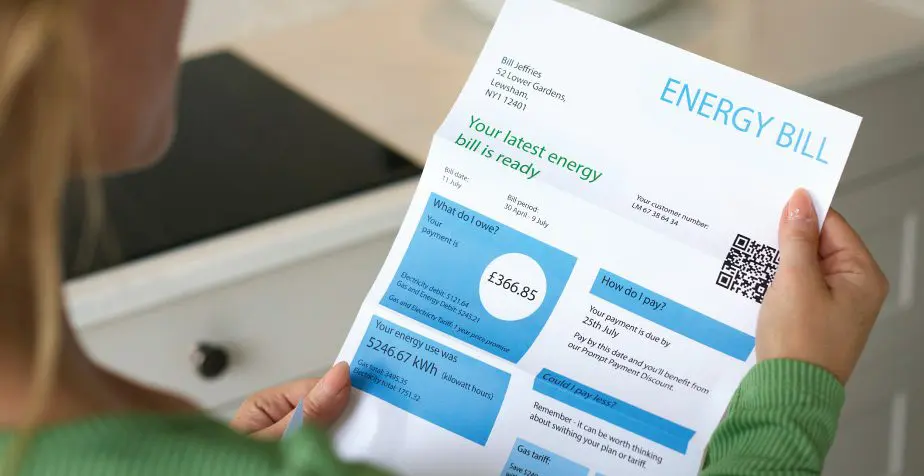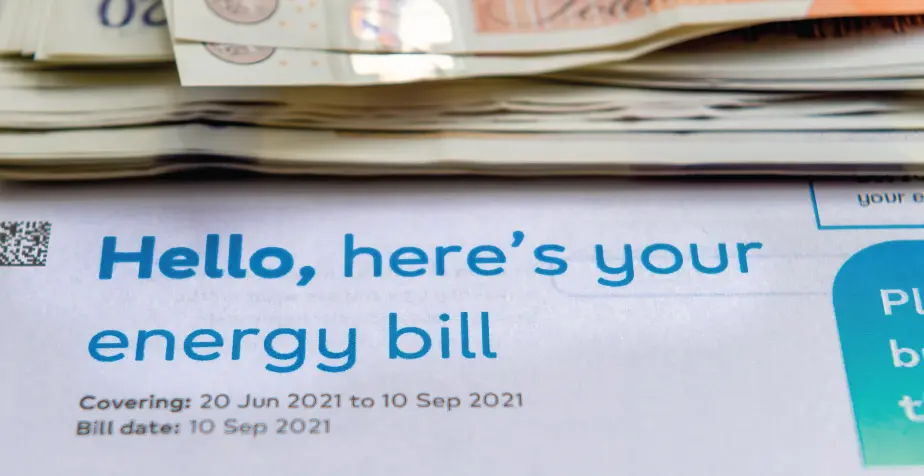What Is the Average Bill Price in the UK and How Is It Calculated?
When that dreaded energy bill drops onto the doormat or lands in your inbox, many UK households find themselves asking: Is this normal? Am I paying too much?
With energy prices fluctuating and the cost of living rising, understanding the average energy bill price in the UK and how it is calculated has never been more crucial.
This comprehensive guide will take you through the typical costs, the factors influencing your bill, and actionable steps you can take to reduce your energy expenses.
What Is the Average Energy Bill in the UK?

As of summer 2025, the average annual dual-fuel energy bill in the UK, covering both electricity and gas, stands at approximately £1,568. This figure is based on data from Ofgem, the UK’s energy regulator, and reflects a “typical” household consuming around 2,900 kWh of electricity and 12,000 kWh of gas per year.
While this average serves as a useful benchmark, your actual bill could be significantly higher or lower, depending on your personal circumstances.
How Is Your Energy Bill Calculated?
Your energy bill isn’t just a random number. It is made up of several components that come together to determine your total cost. Firstly, there is the standing charge, a fixed daily fee that covers the cost of supplying energy to your home, regardless of consumption. This typically ranges between 35p and 60p per day for each fuel. Then comes the unit rate, which is the cost per kilowatt-hour (kWh) of energy you use. For electricity, this usually ranges between 25p and 35p per kWh, while for gas it’s around 8p to 12p per kWh.
For example, if your household uses 2,900 kWh of electricity and 12,000 kWh of gas annually, with average unit rates, your yearly costs might break down like this: electricity usage would cost roughly £870 (2,900 kWh x 30p), gas usage about £1,200 (12,000 kWh x 10p), and standing charges might add up to around £300. This totals approximately £2,370 per year before any discounts, government assistance, or energy-saving measures.
Factors That Affect Your Energy Bill
Several key factors influence how much you pay:
Location: Energy costs can vary by region due to differences in network charges and infrastructure. For example, households in the South West of England often face higher bills than those in the North East.
Property Size and Type: Larger homes typically require more energy for heating and appliances. Detached houses generally consume more energy than flats or terraced homes.
Energy Efficiency: Well-insulated homes with energy-efficient appliances and modern heating systems will use less energy and cost less to run.
Usage Habits: Your lifestyle has a big impact. Leaving lights on unnecessarily, taking long hot showers, or keeping the heating on all day will increase consumption.
Why Have Energy Bills Risen?
In recent years, UK energy bills have surged primarily due to global factors. The rising wholesale price of gas, disruptions in international supply chains, and geopolitical tensions have all played a role. Because the UK relies heavily on imported gas, any supply constraints or price fluctuations abroad tend to hit household bills at home.
Despite government interventions like the Energy Price Cap, which limits what suppliers can charge on default tariffs, bills have remained high compared to pre-2021 levels.
The Role of Ofgem and the Energy Price Cap
The UK energy regulator, Ofgem, introduced the Energy Price Cap to protect consumers from excessive charges. Updated quarterly, this cap sets a maximum rate suppliers can charge for unit rates and standing charges on default tariffs. As of mid-2025, the cap suggests an average dual-fuel bill of around £1,568 per year.
While the cap provides some protection, it doesn’t guarantee low bills, especially if your energy consumption is higher than average. To learn more about how the cap affects you, check the latest updates on the Ofgem website.
Understanding Different Energy Tariffs

Your choice of energy tariff also influences your bill. The main types include:
- Fixed Tariffs: These lock in your unit rates for a set period, usually 12 to 24 months, offering protection against price rises. However, early exit fees may apply.
- Variable Tariffs: These can fluctuate with the market and are subject to the price cap. They offer flexibility but less predictability.
- Green Tariffs: These involve electricity generated from renewable sources and often come at a slightly higher cost, reflecting the investment in sustainable energy.
Choosing the right tariff can significantly impact your bill, so regularly reviewing and switching tariffs using comparison tools like Tariff.com’s energy comparison is highly recommended. For a comprehensive guide on tariffs, visit Citizens Advice.
Average Energy Bills by Property Type
Energy costs can also vary widely based on your home’s size and type. On average, smaller properties like one-bedroom flats might pay between £950 and £1,200 per year, while larger detached homes can exceed £2,000 annually. Semi-detached and terraced houses typically fall somewhere in between.
Government Support and Energy Schemes
If your energy bill feels overwhelming, you may be eligible for government support schemes such as the Warm Home Discount, which offers £150 off electricity bills for qualifying low-income households. Other schemes include the Winter Fuel Payment for older adults and Cold Weather Payments during periods of extreme temperatures. The government occasionally introduces temporary schemes, such as the Energy Bills Support Scheme that provided a £400 discount in recent winters.
For the latest assistance programs and eligibility information, visit GOV.UK energy support and check charity resources like Turn2Us.
Hidden Charges and Billing Pitfalls
Aside from standing charges and unit rates, be aware of potential hidden costs. Early exit fees can be charged if you leave fixed-term contracts prematurely. Estimated billing is another issue, if your supplier bases your bill on estimated rather than actual meter readings, you may overpay. Submitting regular readings or using a smart meter can help prevent this. Late payment fees are also common and can add an extra £10-£20 if bills are unpaid past their due date.
How Smart Meters Help You Manage Your Bills
Smart meters are being rolled out nationwide to modernise energy billing. These devices automatically send accurate readings to your supplier, eliminating estimated bills. Additionally, smart meters provide real-time information on your energy usage through an in-home display, helping you identify wasteful habits.
Smart meters also open up new tariff options, such as time-of-use tariffs, which offer cheaper electricity during off-peak hours.
Practical Tips to Reduce Your Energy Bill
Reducing your energy bill starts with understanding your consumption and making smarter choices around the home. Switching to a cheaper tariff using trusted comparison services like Tariff.com can save hundreds per year. Improving your home’s insulation, through loft and cavity wall insulation or draught-proofing, reduces heat loss and energy use. Upgrading to energy-efficient appliances, preferably with an A++ rating, pays off in the long run through lower electricity consumption.
Adjusting heating habits is another simple yet effective step. Lowering your thermostat by just one degree can save you around £100 annually.
Is Your Bill Too High?

You can check if your energy bill is unusually high by comparing your consumption against the UK averages (2,900 kWh for electricity and 12,000 kWh for gas annually). If your usage is significantly above these figures, it’s a good idea to look into energy efficiency improvements or request an energy audit from your supplier.
What Does the Future Hold for Energy Prices?
Energy prices remain volatile due to factors like international markets, policy changes, and the pace of green energy adoption.
While the price cap provides some cushion, bills are unlikely to fall to pre-2021 levels in the near future. Industry experts and consumer groups such as National Energy Action stress that increasing energy efficiency is the most effective way for households to control costs sustainably.
Business Energy Bills in the UK
While the focus of this guide is domestic energy bills, it’s essential to highlight the distinct nature of business energy costs, which are often more complex and varied. Business bills follow the same fundamental structure, standing charges and unit rates, but contracts are typically tailored to each business based on consumption patterns, meter type, and negotiated rates.
How Business Energy Bills Work
Business energy providers calculate bills by adding up your daily standing charges plus the unit rate for kilowatt-hours (kWh) of energy used, similar to household billing. However, business energy statements often include additional components such as VAT, the Climate Change Levy (CCL), network and infrastructure charges, and occasionally brokerage fees. This structure means the total bill can be significantly more nuanced and opaque.
VAT and CCL Impacts
Most UK businesses are charged a standard VAT rate of 20% on energy bills. However, businesses consuming less than 33 kWh of electricity or 145 kWh of gas per day may benefit from a reduced 5% VAT rate, and often are exempt from the CCL.
Network Charges and TNUoS
Transmission Network Use of System (TNUoS) charges are included in business bills and vary by location and maximum supply capacity. For companies in remote areas, these costs can be higher.
Contract Structure and Exit Terms
Medium to large businesses usually enter bespoke contracts with longer terms, early exit fees, and limited flexibility. Passing from one contract to another or letting your agreement expire can result in much higher ‘out‑of‑contract’ rates.
Tips to Reduce Business Energy Costs
Request Detailed Bill Breakdowns
Make sure your bill clearly details unit rates, standing charges, VAT, and CCL components so you can spot hidden costs or overcharges. This transparency can be key to negotiating better contracts or identifying inefficiencies.
Consider VAT and Levy Exemptions
If your business qualifies as a low-energy user or operates in a charity or community setting, check for reduced VAT eligibility and CCL exemptions to significantly reduce your bill.
Switch or Renegotiate Tariffs
Use credible comparison tools like Tariff.com’s business energy comparison to explore fixed and variable plans suited to your consumption patterns. It’s often worth securing a bespoke deal if your usage is substantial.
Implement Energy Efficiency Programs
Install LED lighting, upgrade HVAC systems, or deploy smart building automation systems. Retail outlets and offices that have transitioned to efficient lighting or improved insulation have seen major cost reductions.
Use Energy Monitoring Tools
Half-hourly meters and energy management software provide insight into usage peaks and inefficiencies, helping businesses optimize operations and reduce overspend.
Stay Vigilant on Billing and Contract Terms
Avoid rollover contracts by tracking expiry dates, submit regular meter readings, and appoint a trusted energy broker or auditor to assess bills and contract terms. This prevents overpayment and maintains control over your energy spend.
Take Control of Your Energy Costs Today
Understanding how your energy bill is calculated and the many factors that influence it empowers you to take meaningful action. Whether it’s switching to a more competitive tariff, improving your home’s insulation, or changing your daily energy habits, there are countless ways to reduce both your costs and your carbon footprint.
At Tariff.com, we’re dedicated to making this process as simple and stress-free as possible for your business. Our free energy comparison tool allows you to find the most competitive deals on the market, tailored to your unique consumption patterns and needs. We work with a wide range of trusted UK energy suppliers to ensure you get transparent, reliable, and up-to-date offers.
Beyond comparisons, our team of energy experts can guide you through understanding your bills, identifying hidden charges, and advising on efficiency upgrades that can lead to long-term savings. We also offer insights on green energy tariffs and renewable solutions, helping you transition to more sustainable energy use without compromising on cost or reliability.




